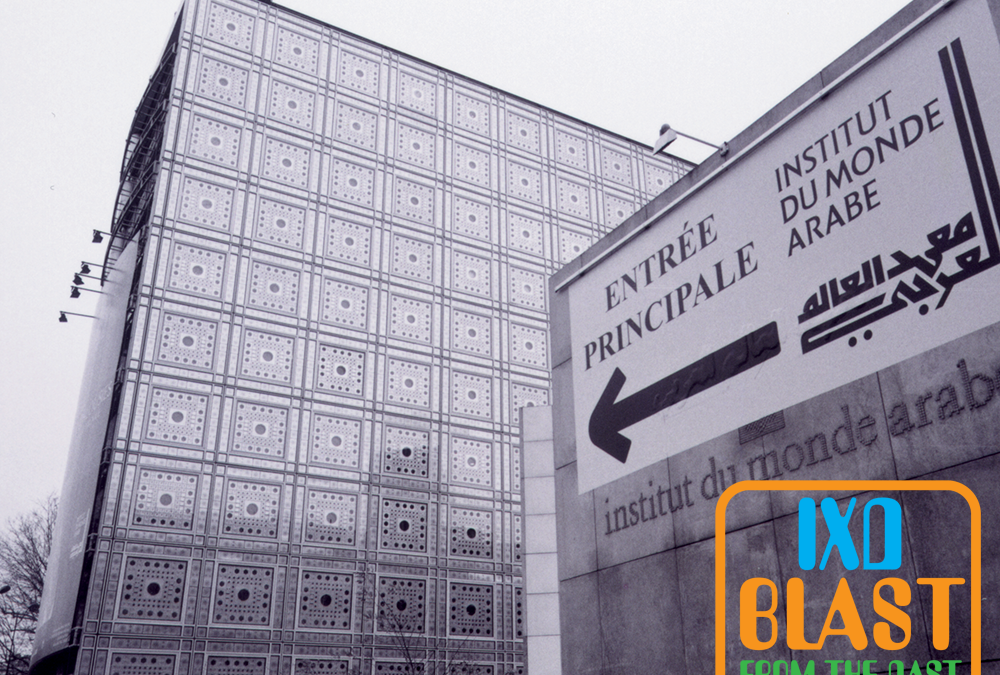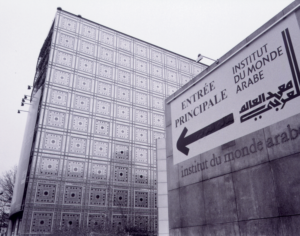While this isn’t classically interactive, it is an active experience in a really interesting way.
On approaching the entrance to the Institu du Monde Arabe in Paris, the South-facing glass wall of the building, which is also part of the entrance courtyard, appears to be backed by Arabic latticework. This isn’t so surprising or puzzling, and seems like a rational interior design motif for a building representing traditions that go back over 1,000 years.
Upon entering the building, one is immediately surprised by the technological modernity of the building’s interior. In fact, this building is still one of the most technologically sophisticated in the world. Its mediatique is buzzing with robot arms switching video tapes into a bank of players, displaying images on a wall of monitors, each representing a different Arabic countries.
However, it is when one climbs a floor or two and approaches the South wall—this time from the inside—that one is confronted with a contradiction of reality. The latticework that easily could have been assumed from the outside is, in fact, an array of working metal apertures, some tiny, others large, in each pane of glass. These apertures automatically open and close during the day to vary the light coming into the building, coordinating the temperature inside. The sheer number of apertures multiplied from pane to pane over the entire length and height of the building is staggering and unbelievable. Like the pyramids themselves, the amount of work involved in their creation is difficult—almost impossible—to process, or to believe.
There are nearly 20,000 working apertures that open and close automatically to regulate light into the building (and, therefore, temperature, as well). The prospect of such a detailed undertaking is so difficult to calculate that, when I was there, I was left staring in awe, silence, and disbelief that someone, anyone, would actually attempt it. Part of my brain told me it could not exist—no one in their right mind would try; yet my eyes were informing another part of my brain. Yes, indeed, it did exist, right in front of my face.
The lesson to learn, here, is that all experiences take place somewhere. Whether it’s the user or system, there is always place—and the conditions at and in that place. And, interacting with that place is always an opportunity. How do your interactive experiences acknowledge and change with place (and its time, date, temperature, weather, location, activity, etc.?
Experience Design 1.2: pages 006-007



Recent Comments